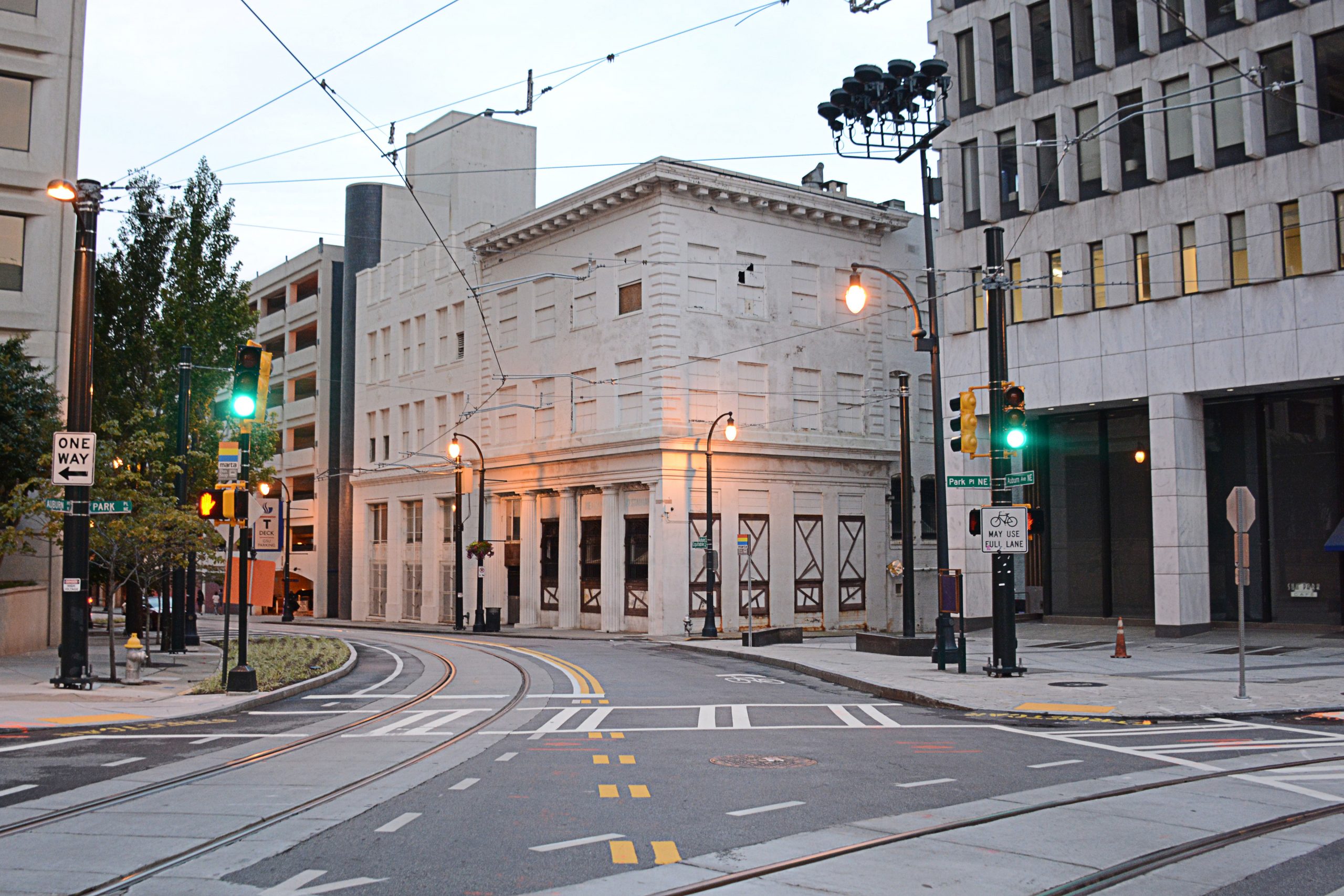
According to this week’s article, a City Council member worked on a resolution to declare the Bell Building a historic site, and Georgia State is hiring an architect to assess what it would take to maintain the building.
It would seem that the city and Georgia State are both on board to try and preserve the Bell Building, but no one can be sure of anything that might happen in the future.
But while the article gives a good run-down of the key players and their decisions thus far, I’m in the business of voicing my own biased opinion, so this article is going to be about that.
First, I should say my opinion of the building as a historic relic itself is close to non-existent. I only heard about the building because of the debate surrounding it in recent months.
Otherwise, the building penetrates my personal experience for all of thirty seconds while I pass it on my way to Aderhold. During this time, my only thoughts about the building–if I have any at all–run along the lines of “what a decrepit-looking building.”
SavetheBell.org has a nice (but vague) description of the building’s reuse potential. Vague, perhaps, because those big names who will ultimately decide the fate of the building have all the money and social power to shape it to their purposes.
Refer, then, to our news story for such names. It is, in the end, Georgia State’s property, and it is ultimately their choice whether to respond to petitions or not.
Speaking of petitions, the blogger Darin Givens has recently posted a story on his blog titled “Atlanta: question the way we perceive homelessness.”
One of the theses of his article is this: “People experiencing homelessness – they aren’t the problem. Our inability as a society to provide them with adequate resources is the problem.”
Which brings me to that biased, uninformed opinion of mine I was talking about earlier. Make me dictator (as my grandfather says), and I’d turn the Bell Building into a homeless shelter.
It just seems to me that a broken, decrepit building, one that has been in disuse for years, would be best used to house broken, decrepit lives.
It’s obvious to think of the building as Georgia State property, and it’s obvious to think of it as a potential asset to this or that academic endeavor.
It’s also easy to get caught up in the romanticization of the past, the glorious past in which the building was the nerve center of telephone activity.
But as far as I’m concerned, the building, if it should continue to stand, would be best used to fulfill an immediate and pressing need.
Now, I’m not sure if homelessness is necessarily a problem in metro Atlanta, but better-informed urbanists such as Givens certainly do.
And my personal experience of the area has always been that there are a ton of homeless people, especially in the Woodruff Park area.
I don’t need to proselytize here about why it’s important to help the homeless. They’re citizens just like anyone else, capable of contributing to society just like anyone else, but some have been crippled by drug addiction, mental illness, and poverty.
They are not a breed of person, or even a social ill, they’re just people who either made the wrong choices or have had the wrong choices made for them. But you already know that.
Taking a look at Google Maps, one can see that there are very few homeless shelters around 5 Points MARTA station, where there is a large concentration of homeless.
It makes sense to me that, since Georgia State and the city alike seem to have been dragging their feet with regards to what to do with the Bell building, that an immediate use for it would be to make it a homeless shelter.
At the very least it could be used by pre-existing homeless shelters downtown such as the Salvation Army, Shepherd’s Inn, and the Metro Atlanta Task Force for the Homeless.
But that’s just one opinion. One that, I should remind any reader who’s made it this far, is based entirely upon whimsy and a desire to clear out those people around Woodruff Park who seem to be suffering.
I know that such a thing will likely not happen. It will probably be declared a historic site and Georgia State will do something with it, but this article should serve simply as an expression of an alternative use, one which could very possibly be more useful to the city in the long run.
